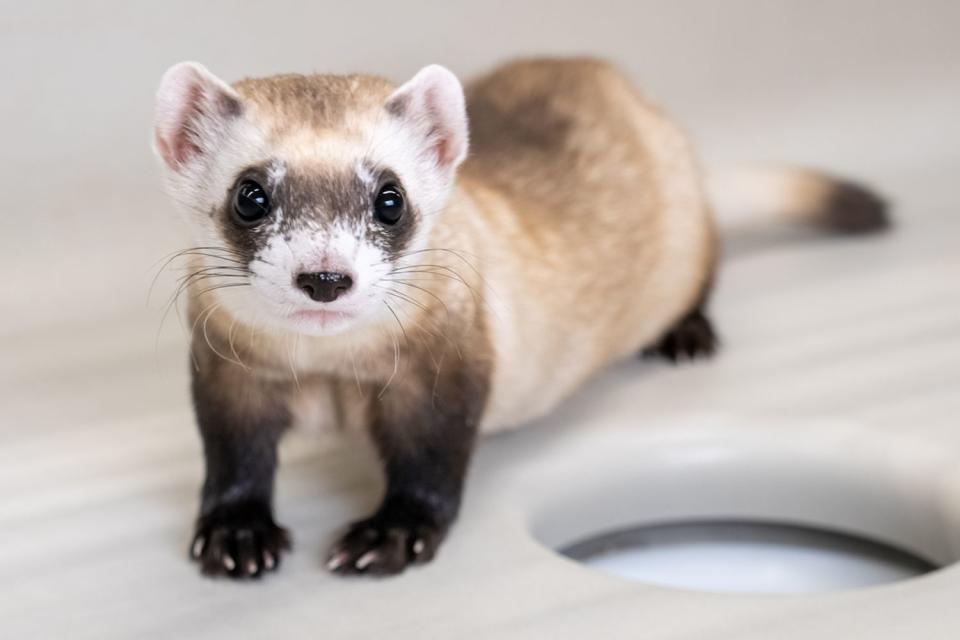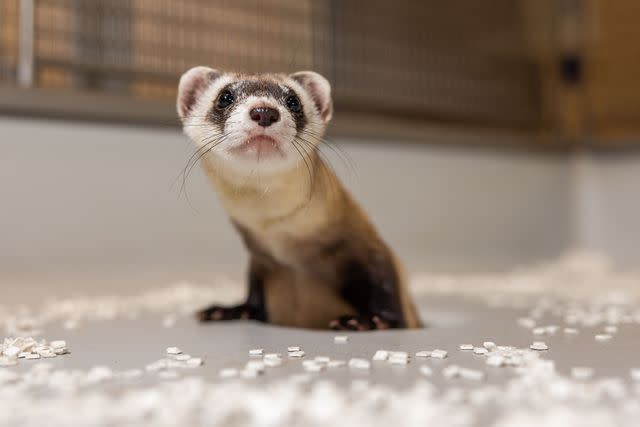2 More Endangered Ferrets Have Been Cloned from Critter Frozen in the 1980s
The U.S. Fish and Wildlife Service has announced the births of Noreen and Antonia

Kika Tuff/Revive & Restore
Noreen, the black-footed ferret cloneOver three years after a black-footed ferret became the first-ever endangered U.S. species to be cloned, two new black-footed ferret clones have been born.
On April 17, the U.S. Fish and Wildlife Service announced the births of Noreen and Antonia, two ferrets from the National Black-footed Ferret Conservation Center in Colorado and at the Smithsonian’s National Zoo & Conservation Biology Institute in Virginia, respectively.
CBS News reports that Noreen and Antonia were born in May, citing a Fish and Wildlife Service spokesman, who said via email that "science takes time and does not happen instantaneously."
The ferrets, who "continue to reach expected developmental and behavioral milestones," were born using the same genetic material as the first clone, Elizabeth Ann, who was born on Dec. 10, 2020. As previously reported, Elizabeth Ann was born from the frozen cells of Willa, a black-footed ferret who died over 30 years ago.
Willa's cell samples were sent from the Wyoming Game & Fish Department to the San Diego Zoo Global's Frozen Zoo in 1988.
Related: Elizabeth Ann the Black-Footed Ferret Is the First-Ever Cloned Endangered U.S. Species

Smithsonian Conservation Biology Institute
Antonia, the black-footed ferret cloneThe service notes that, alongside research partners, it will "proceed with breeding efforts for Noreen and Antonia once they reach reproductive maturity later this year." As for Elizabeth Ann, the first-born clone is healthy and has been "exhibiting typical adult ferret behavior," per the U.S. Fish and Wildlife Service.
Noreen and Antonia's births come after efforts to breed Elizabeth Ann failed, due to a condition called hydrometra, in which her uterine horn fills with fluid.
Eventually breeding the two youngest members of the bunch in Noreen and Antonia may "significantly increase the species’ genetic diversity," per the service, and potentially develop resistance to diseases.
Critical species recovery partners and scientists at Revive & Restore, ViaGen Pets & Equine, Smithsonian’s National Zoo and Conservation Biology Institute, San Diego Zoo Wildlife Alliance, and the Association of Zoos and Aquariums — along with the Fish & Wildlife Service itself — helped bring together the latest scientific advancement of cloning the endangered species, per a release.
Never miss a story — sign up for PEOPLE's free daily newsletter to stay up-to-date on the best of what PEOPLE has to offer, from celebrity news to compelling human interest stories.
One of the rarest land mammals in North America who were once thought to be extinct, a small population of black-footed ferrets was discovered in 1981 in Wyoming.
Now, as the service notes, all living black-footed ferrets (not including the three clones) are descendants of the last seven wild black-footed ferrets. Willa was part of the population of seven.
Genetic studies found that the 1988 tissue samples later collected from Willa "possessed three times more unique variations than the living population," as previously noted.
For more People news, make sure to sign up for our newsletter!
Read the original article on People.


